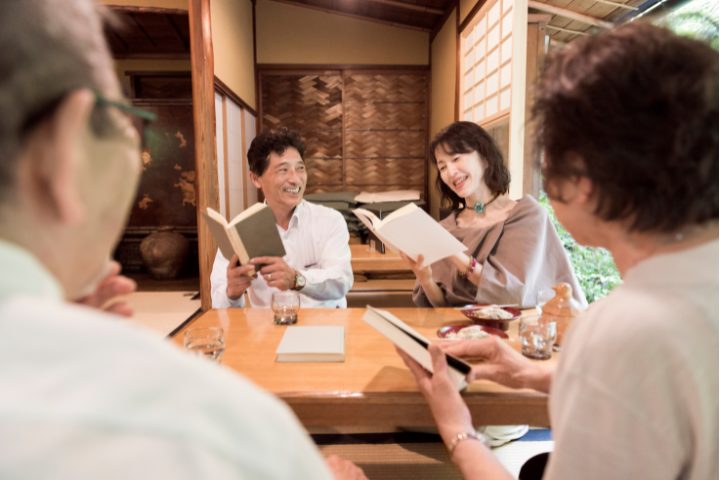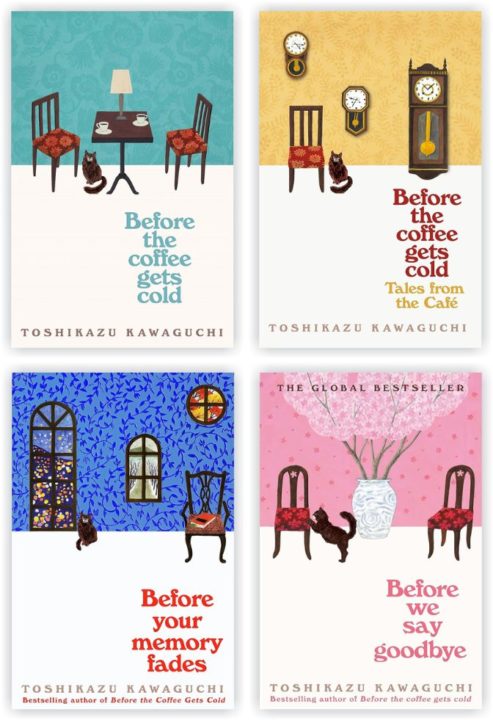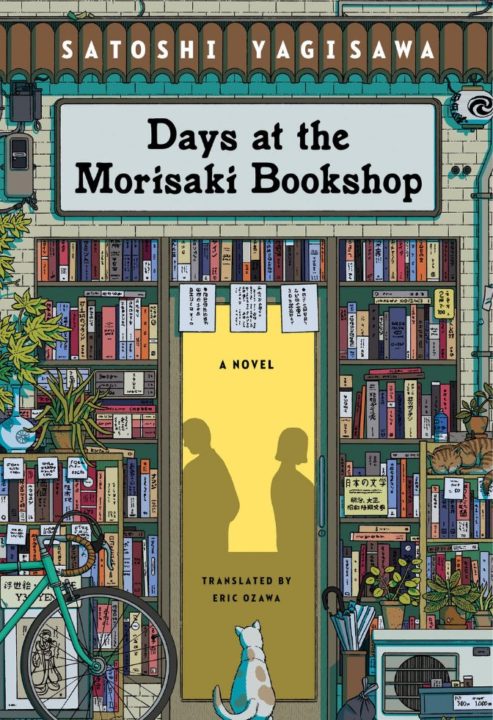If you search for good book recommendations on social media, you will most likely find at least one translated Japanese novel included on many users’ lists. Contemporary translated Japanese novels have recently gone viral to the extent that they now have their aesthetic corner on social media platforms such as TikTok and Instagram. This is especially seen through the domination of contemporary Japanese fiction within the trending hashtag ‘Japanuary’, a hashtag dedicated to spotlighting Japanese culture, which recommends viewers to get a glimpse of Japan through various lenses, most notably through fiction.
What Makes Japanese Novels So Popular?

Image credit: Canva
Historically, Japan has a rich culture of poetry, theater, and literature. Zen-Buddhism with themes on encountering enlightenment through the simplicity of daily life has significantly influenced historical Japanese literature and has its traces in current Japanese storytelling. If you’re an avid reader, despite maybe not having read Japanese novels, the author Haruki Murakami might ring a bell. His work has defined Japanese literature itself and can be used as an example of how vividly different Japanese and English storytelling can be. With his unique prose and interesting use of magical realism, his works have been internationally acclaimed and paved the way for contemporary Japanese fiction.
The viral phenomena of contemporary Japanese books themselves may lie with having plots (and covers) that readers often describe to be ‘aesthetic’ along with most books having a short amount of pages that average readers can finish within a day or two. With an ambiance that is difficult to experience from reading English-based literature and can be told within a short amount of pages, it is no surprise that contemporary Japanese fiction is gaining commercial recognition.
What Is Unique About Translated Japanese Novels?

Image credit: Canva
The most unique aspect of contemporary Japanese novels is that they surpass multiple genres to the point where Japanese Fiction is a genre of its own. Of course, some stories utilize elements such as fantasy and romance but contemporary Japanese novels are rarely categorized as a Japanese fantasy novel or a Japanese romance novel. That is one of the key differences between Japanese and English novels, as the latter focuses on straightforwardness or world-building, making it easier for stories to be classified into a specific genre.
This is not in any way saying that there are no English novels that have open endings or interpretative plots, as it all comes down to the author’s writing style and book genre. However, with Japanese novels, these aspects are given from the simplistic nature of Zen Buddhism’s historical influence that shaped Japanese literature.
Do Linguistic Differences Play a Role in Storytelling?

Image credit: Canva.com
The English translations of Japanese novels, despite their accuracy, might be confusing to read at first, as the sentence structures of English-based literature are different. The main linguistic difference between the Japanese and English languages is that the former tends to omit subjects within a sentence, particularly in conversations and dialogues if the subject being discussed is already obvious within the conversation.
Character dialogues in Japanese novels have their own set of rules in which it is preferred for speaker tags to seldom be used, Haruki Murakami himself was also criticized for overusing speaker tags as it gives his books a ‘foreign feel’. Hence, it is a common theme within all Japanese novel plots to focus more on environmental influence over individualism. This is incorporated into translations that encourage readers to read between the lines instead of understanding the story primarily through the vividly descriptive thoughts and feelings of the protagonist, an aspect that is prominently found in English literature.
Book Recommendations
Want to experience the viral phenomena of Japanese novels yourself? Here are some good books ranging from comfortable slice-of-life stories to heavier societal issue-related topics:
Before The Coffee Gets Cold (series) by Toshikazu Kawaguchi

Image credit: Goodreads
Initially based on an award-winning play written by Kawaguchi himself, this ongoing viral book series released in 2015 has been translated into multiple languages.
It tells the stories of four main protagonists who visit a small unique cafe in Tokyo’s back alley that also allows its customers to travel back in time. The catch; they must NOT leave the cafe, must sit in a particular seat, and most importantly, return to the present before the coffee gets cold.
We get to see how these characters use this golden opportunity for their own heartwarming reasons, and it provides food for thought of how we could change our past if given the opportunity to do so. The series currently consists of four books that each tell the respective time-traveling stories of four different cafe visitors, with a fifth book set to be released this year, so do keep a lookout for the new book!
Days At The Morisaki Bookshop (duology) by Satoshi Yagisawa

Image credit: Goodreads
First released in 2009, Yagisawa’s debut novel won the Chiyoda Literature Price, sold more than 100,000 copies, and inspired a film adaptation.
This book tells the story of Takako, who accepted the offer of her eccentric uncle, Satoru, to live rent-free above his bookshop in Tokyo’s famous book district, Jimbocho, after discovering her boyfriend’s infidelity. Takako learned to embrace the healing power of books after previously being described to be a staunch non-reader. She understood a different perspective of life through interacting with the residents of Jimbocho, all while repairing her relationship with Satoru.
It is a wonderful story of books and the strength that can be found in human connection that made me a frequent visitor of Jimbocho myself. A follow-up book was published in 2011 (with the English translation set to be released this summer) that introduces us to more characters visiting the bookshop with their own stories to tell.
Breasts And Eggs by Mieko Kawakami

Image credit: Goodreads
This book has been a conversation starter among Japanese readers. It sold over 250,000 copies and won the prestigious Akutagawa Prize (argued to be the most respected literary prize in Japan) for Kawakami’s bold portrayal of women’s lives in Japan, particularly regarding Japanese societal expectations for women.
Initially written as a novella in 2008, Kawakami published a rewritten version in 2019 divided into two parts but utilizes the same structures and characters. It tells the story of three women who each confront societal pressures associated with adulthood and childbirth in their own way.
Issues that are considered taboo in Japan, such as breast enhancement and IVF birth procedures, are the primary issues discussed in this story and will definitely get you to rethink the true definition of ‘womanhood’.
Why Not Add Some Japanese Novels to Your Personal Library?
These recommendations are only a glimpse of the themes that contemporary Japanese fiction has to offer. They not only provide an opportunity to transport you to Japan and visualize its culture (as most novels are set in Japan), but they will also transform your perspective on society and what it means to be human, regardless of whether or not you’re in Japan at the moment.
So if you’re looking to expand your literary collection, do give translated Japanese novels a try. Whether or not its unique storytelling method is your cup of tea, you will certainly be exposed to stories that will stick to your heart for a long time.
Related Articles
- Books in English: Where to Find Them
- Japanese Literature Classics: Kojiki and Nihon Shoki
- The Tale of Genji: The Novel That Changed Japan
Featured image credit: Canva






